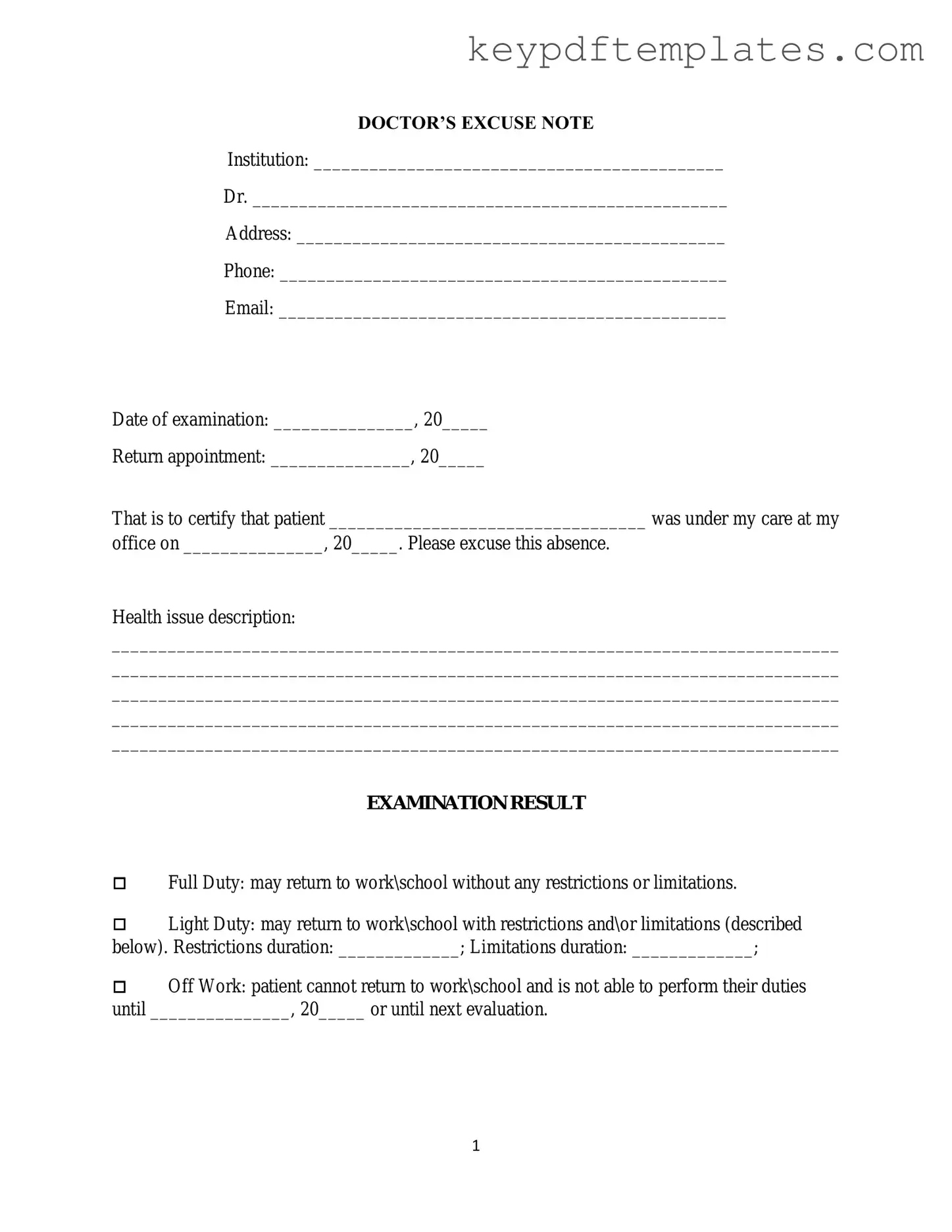Get Doctors Excuse Note Form
The Doctors Excuse Note form is a document provided by healthcare professionals to validate a patient's medical condition and absence from work or school. This form serves as an official record, ensuring that the individual's health issue is acknowledged by employers or educational institutions. Understanding its purpose and proper use can help individuals navigate their responsibilities while managing their health.
Modify Document Online
